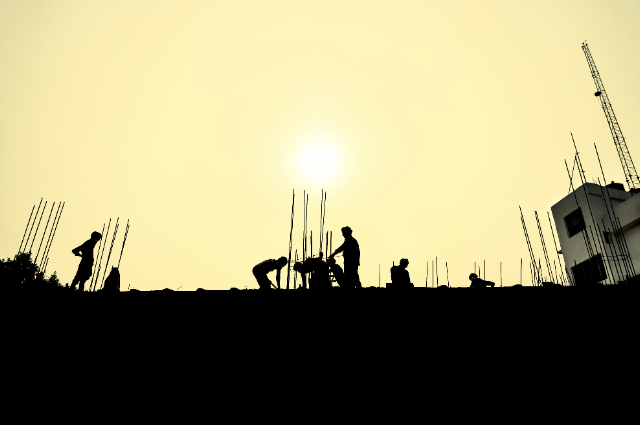
Photo by Rahul Kashyap on Unsplash
In June 2024, the Consumer Price Index (CPI) for both agricultural and rural labourers saw a significant increase. According to the latest figures from the Union Ministry of Labour and Employment, the CPI for agricultural labourers reached 7.02 percent while for rural labourers, it climbed to 7.04 percent year-on-year.
Consistent Inflation Growth
This rise in inflation isn't a sudden spike but part of a continuing trend. In April, the inflation rate for rural labourers was recorded at 6.96 percent. This increased to 7.02 percent in May, and by June, it further surged to 7.04 percent. Similarly, the overall inflation for agricultural labourers was 7 percent in May that was indicating a steady climb.
Detailed CPI Statistics
The Ministry's report highlights that the All-India Consumer Price Index for Agricultural Labourers (CPI-AL) and Rural Labourers (CPI-RL) both rose by 11 points in June 2024. This brings the indices to 1280 and 1292, respectively, based on a base year of 1986-87.
Key Inflation Drivers
The primary factors driving this inflation for agricultural labourers include food and clothing costs, which saw significant increases. Conversely, the CPI for fuel and light showed a decline for this demographic. For rural labourers, the most notable increase was also in food-related costs, while the inflation for fuel and light experienced a reduction.
In summary, the data from June 2024 indicates a continued rise in inflation affecting both agricultural and rural labourers. With food and clothing costs leading the surge, the economic pressure on these groups is intensifying, even as some categories like fuel and light show a decline. This trend of rising inflation is expected to impact their overall cost of living significantly.
Understanding the Cost of Living for Rural India: How is the data collected?
The Indian government closely monitors the cost of living for people who work in farming and rural areas. This information is gathered by the Labour Bureau, a government department. They collect data on prices of everyday items from 600 villages spread across 20 states every month.
What are CPI-AL and CPI-RL?
There are two main numbers calculated from this data:
- CPI-AL: This shows the average price change of goods and services bought by agricultural labourers.
- CPI-RL: This reflects the price changes for all rural labourers.
How did prices change in May 2024?
In May 2024, both CPI-AL and CPI-RL increased compared to the previous month. This means that things like food, clothing, and other essentials became more expensive for rural workers.
- The rate at which prices for agricultural labourers went up (inflation) slowed down slightly compared to April 2024.
- For all rural labourers, the inflation rate increased a little compared to April 2024.
Compared to last year
If we look at the prices in May 2024 compared to May 2023, we see that both agricultural and rural labourers are paying more for things. This means their buying power has decreased. In simpler terms, the cost of living for people working in rural India is going up. While the pace of this increase has slowed down slightly for agricultural workers, it's still a challenge for them and other rural workers to make ends meet.
Instances of Policy Changes Based on CPI Data: Interest Rate Adjustments by the RBI
The Reserve Bank of India (RBI), which is the central bank of the country keeps a close watch on the Consumer Price Index (CPI) to guide its monetary policy decisions, particularly concerning the repo rate. When inflation exceeds the desired range, the RBI responds by raising the repo rate. This action helps control the money supply and curb inflation. On the other hand, if inflation is low then the RBI may lower the repo rate to encourage economic growth by making borrowing cheaper and stimulating spending.
Social Security and Pension Adjustments
The government relies on CPI data to adjust social security and pension benefits. This adjustment is crucial to ensure that the purchasing power of beneficiaries is not eroded by inflation. By linking benefits to the CPI, the government helps maintain the standard of living for retirees and other recipients.
Minimum Wage Adjustments
The government also uses the CPI to periodically review and revise minimum wage levels. This ensures that workers earn a living wage that keeps pace with inflation. By doing so, the government protects workers' purchasing power and helps them afford basic necessities despite rising prices.
Food Security Programs
Understanding food price inflation through CPI data is essential for the government to allocate resources effectively for food security programs. Programs like the Public Distribution System (PDS) and the National Food Security Act benefit from this data. By monitoring CPI, the government ensures that vulnerable populations have access to affordable food even when inflation is high.
Agricultural Policies
The government analyzes CPI data to measure the impact of agricultural production on food prices. This analysis helps in formulating policies aimed at improving agricultural productivity and stabilizing food prices. By doing so, the government can better manage the food supply and control inflationary pressures related to food costs.
The CPI is a vital tool for various policy adjustments in India. From guiding interest rate decisions and ensuring social security benefits to adjusting wages and managing food security and agricultural policies, the CPI helps the government and the RBI maintain economic stability and protect citizens from the adverse effects of inflation.
Fighting the Price Hike: Government and RBI Actions
Rising prices or inflation is a problem that affects everyone. To tackle this, the government has taken steps like reducing taxes on petrol and diesel and making some imported goods cheaper. The Reserve Bank of India (RBI) also plays a part. They increase interest rates to control how much money people spend. When interest rates go up, banks charge more for loans and pay more interest on your savings. This can help slow down price increases.
. . .
References:
